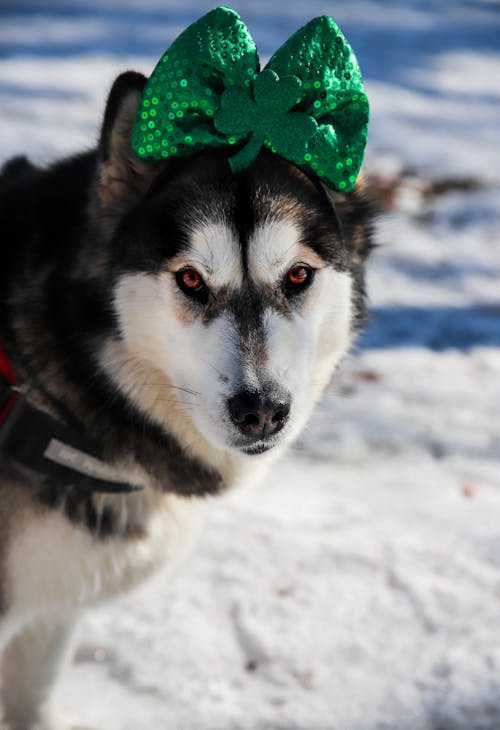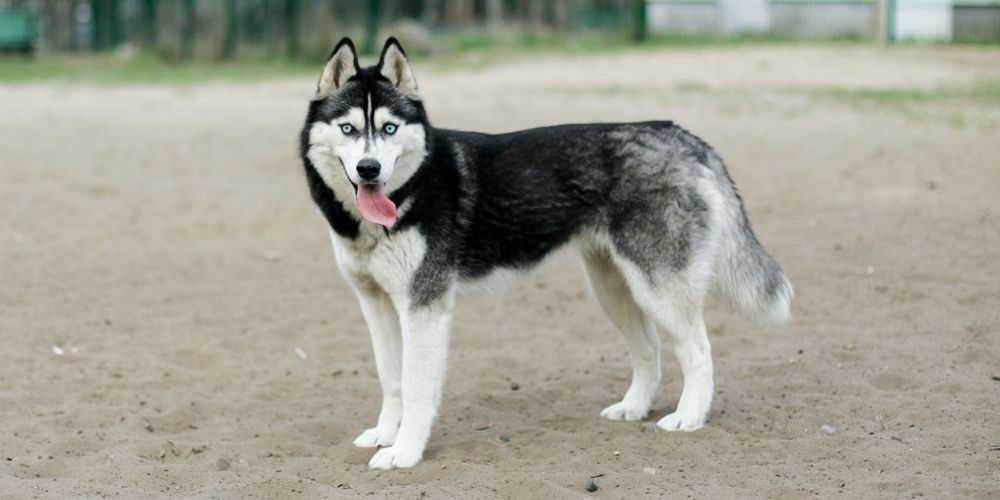Know you’re Husky better
In this article, We’ll talk about husky body language. Huskies are not able to talk like humans. But they express themselves through their body and you can understand them well if you pay attention. Simple things like their posture, movements of the tail and ears, and facial expressions can tell you a lot about your Husky. You ought to analyze all of these characteristics at once to decipher their state of mind.
Your dog’s body language in relation to the conditions in their environment tells you a lot about their behavior. It is important for a responsible owner to be able to decipher when their dog is uncomfortable and scared whether they are happy.
Husky Body Language- A Detailed Guide
Your Husky’s body language in relation to their immediate surroundings is a means of conveying whether they are happy, excited, afraid, or anxious. You have to pay attention to all the aspects of their body at once to understand their expression.
Pay attention to the signs given by your Husky’s body
Your Husky constantly expresses themselves through some obvious signs. You must be able to decipher how they are feeling just by looking at them.
Look at their eyes are they blinking or fixed?
See whether their eyes are fixed at one position and not blinking or are they happy and smiling? You must also pay attention to the whites of your Husky’s eyes. If the whites of their eyes are visible, it means that your Husky is either paying attention to a threat or is afraid. The whites of their eyes are also visible when they are anxious.
Look at their face: is it stressed or loose?
Note whether your Husky’s face is loose and carefree or is it tense? This could tell you about their state of mind at the given moment. See whether they are looking intently at you, staring downwards, or looking in another direction?
Look at their mouth: are their teeth showing?
This could tell you whether your Husky is angry, stressed, or afraid. See if their mouth is closed or open. Note whether their teeth are showing and their lips are pulled backward. A relaxed and playful dog might just have its tongue hanging from the side. A stressed Husky would appear tensed.
Note their ears: are they upright or drawn back?
Note whether your Husky’s ears are standing upright or drawn back. When your Husky is anxious or scared, their ears would be drawn back against their head in a submissive manner.
Pay attention to their tail: is their tail relaxed or stiff?
See whether your Husky’s tail is relaxed or stiff. If their tail is stiff, it could mean that they are stressed. A wagging tail indicates happiness and excitement. Whereas, a tail tucked between the legs shows that your dog is afraid.
Note their posture: are they relaxed or stiff?
See whether your Husky’s posture is relaxed or stiff? Whether they appear at peace or tense? Their posture should be compared to the situation they are in. if your Husky is in attack mode or meaning to fight, their body may be leaning forward. An anxious or afraid Husky’s body would lean backward.
See the shape of their back: is it straight or curved?
Huskies tend to curl their backs like cats when they are startled, afraid, or anxious. See whether their back appears normal or if they seem to have flattened their back to the ground.
Note how your dog expresses themselves in different situations
You ought to know your dog like a friend. Note the difference in the way they express themselves when they are happy and when they are sad.

Signs that your Husky is confused
A confused and unsure Husky would stand at attention because they are trying to decipher the best possible solution for their situation. This alertness will be evident in their stiff posture and a serious expression on their face. The ears will be upright and the mouth will be closed. The tail will be straight.
The overall appearance will be that of determination and seriousness. Also, note the way they bark or howl. The expression of sound will be lower in pitch than usual.
Signs that your Husky is angry
Huskies don’t get aggressive very often. In fact, it is rare to come across an aggressive Husky. But they could get angry because of some reason. An angry Husky would appear tensed. Their posture will be tall and erect and their eyes will be fixed on the target. The tail will be straightened and the ears will be upright.
The body of your Husky will be leaning forward towards the target. The front legs will be carrying the weight. The sound of your Husky’s voice would appear more intense than usual. They’ll probably be growling at the target and expressing their anger.
Signs that your Husky is afraid
When your Husky is afraid, they’ll appear shrunken in size. Their face will appear tensed and the mouth will be tightly clenched. Ears will be pressed back against the head and the tail will be pressed between the hind legs. A frightened Husky’s whites of the eye will be visible. They might also lick their lips and their back may be hunched. An afraid Husky might also howl and bark in a low pitch voice.
Huskies sometimes yawn when they are afraid. They might also lick their lips at the same time. If their yawning does not suit the situation at hand, it probably means that your Husky is scared. Puppies are more likely to yawn than adult Huskies. But if you see your Husky yawning a lot around some person or another animal, it might mean that they are stressed.
Signs that your Husky is acting submissive
Huskies act submissive when they intend to prove that they are harmless. This is usually done to appease their owner. A submissive Husky would appear small and vulnerable. They may show their submission by lying flat on the ground and exposing their underbelly.
A submissive Husky would not look at you directly and will probably avert their gaze. Their ears would be pressed flat against the back of their head and their tail would be tucked between the hind legs. Submission is not a comfortable state for a Husky. They probably don’t want to act aggressively but they could attack for their protection if threatened.
Signs that your Husky is happy
A happy Husky would have a relaxed posture and a neutral expression on their face. Their ears would be upright and their eyes would appear to be smiling. Their gaze would not appear intense like when they are angry, afraid, or anxious. Their mouth will be relaxed and somewhat open. Their tongue might be hanging out from the side.
The stature will appear normal. They wouldn’t appear larger than their size or shrunk and flattened. The sound of their voice would be high-pitched and excited.
Signs that your Husky is appeasing
- Many times, Huskies lick their lips or nose to let other dogs or people know that they are in a calm state.
- Huskies wag their tail with a relaxed mouth and posture to show their playful mood.
- Oftentimes, they also bow to their owners as a sign of appeasement and start playing. Huskies may also bow to other dogs when they want to play.
- Huskies also sniff as a sign of appeasement.
- Soft eyes that appear to be smiling are also a sign of appeasement. This is unlike the relentless stare of Huskies when they are aggressively staring at something. A friendly Husky may also squint their eyes.
- Note if their movements are slow. Your Husky would be slow in their approach to appear calm and composed.
- If your Husky gets in between two other dogs, it means they are trying to break a fight or initiate play.
- Huskies also tend to yawn and lick their lips when they want to convey to the other dog that they are no threat. This is a way for Huskies to calm down the situation.
- Huskies also roll on their backs as a sign of appeasement. With this, they expose their vulnerable belly and show submission. This shows respect for the other person or dog and that they mean no harm.
Conclusion
It is important that you pay attention to the expression of different body parts at the same time while studying the body language of your Husky. Body language must be deciphered according to the situation of their immediate surroundings. With time, you will learn how your Husky reacts in different situations and know how to respond.
Dogs communicate all the time with their body language. Their posture, the position of their ears, tail, and their expressions all convey their state of mind. Knowing your dog well will enable you to respond aptly according to a given situation.

